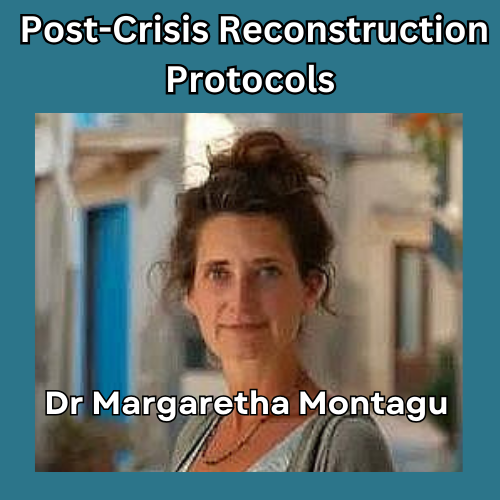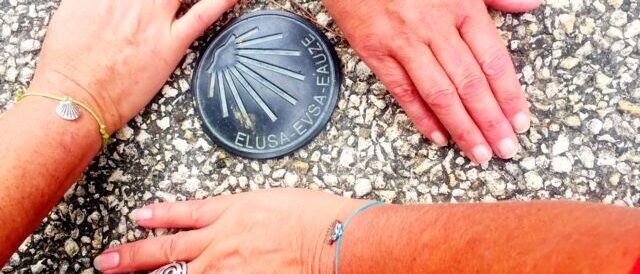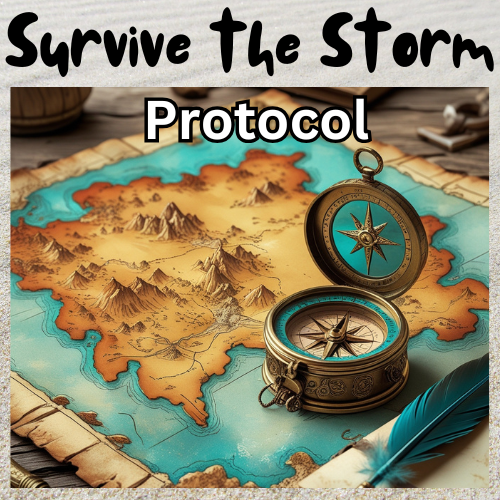Why Successful Professionals Secretly Question Their Accomplishments (And What They Can Do About It)
Part of the #12 Strategies Collection
Introduction
In my years of working with the impressively accomplished, I’ve observed that many of them (though not all, mind you – some remain perfectly content orchestrating their empires) eventually find themselves peering into their trophy cases with a puzzling sense of “Is that all there is?”
These titans of industry often find themselves wrestling with an unexpected existential itch that no amount of professional achievement seems to scratch. This quest for meaning isn’t triggered by failure – quite the opposite. It tends to bubble up precisely when everything is going swimmingly well.
I have never been a titan of industry, but I know this feeling well – that peculiar emptiness that comes when external achievement doesn’t quite fill the internal void. When an insidious disease that threathens my sight put an end to my medical career, As a former I had to reinvent my entire identity and I’ve experienced firsthand how success can suddenly feel like the wrong answer to the right question.
The pattern is as predictable as it is profound: successful professionals, and accomplished business owners, who’ve expertly navigated the complexities of their professional worlds, suddenly find themselves fumbling with questions that their MBA programs somehow forgot to cover.
I’ve noticed that a number of key realisations tend to ambush my most successful clients:
- The Achievement Hangover – Many successful people discover that reaching their financial goals doesn’t deliver the sustained satisfaction they expected. They find themselves asking “Is this all there is?” after attaining the positions, wealth, or status they worked years to achieve.
- Hedonic Adaptation – High-achievers frequently experience an intensified version of the hedonic treadmill. Each success – whether it’s a promotion, bonus, or award – provides diminishing emotional returns, pushing them to seek sources of fulfilment beyond external accomplishments.
- Success Isolation – Their position often creates distance from others, leading to a form of loneliness that material success can’t address. Many find themselves surrounded by transactional relationships rather than authentic connections.
- Identity Integration Challenges – Many struggle to reconcile their successful professional persona with their deeper personal values and desires. They may feel trapped performing a role rather than living authentically.
- Existential Time Pressure – High-performers are often acutely aware of time’s value and finite nature. This can create anxiety about whether they’re spending their limited time on meaningful pursuits rather than just accumulating more success markers.
- Legacy Concerns – Beyond financial inheritance, many wonder about their broader impact on the world and future generations. They question whether their achievements contribute to something larger than themselves.
- Skill Transfer Gap – The same analytical and strategic skills that brought professional success often don’t translate directly to building a meaningful life, creating a need for new approaches and frameworks.
- Authenticity Deficit – Many realise they’ve been living according to others’ definitions of success rather than their own, leading to a desire to reconnect with their authentic interests and values.
- The Comparison Trap – High-achievers often find themselves in social circles where external markers of success are the norm, making it harder to find role models for meaningful living rather than just successful living.
- Purpose Evolution – As basic needs and traditional goals are met, many naturally evolve toward self-actualisation and transcendent purposes, seeking to apply their capabilities to more meaningful challenges.
Define “a Meaningful Life”
Ah, a meaningful life – that elusive quarry that has philosophers turning in their graves and self-help authors turning handsome profits. Let me offer a definition that doesn’t require spending a weekend at a wellness retreat or purchasing a specific selection of essential oils:
A meaningful life is one where you’ve mastered the art of giving a damn about the right things. It’s the sophisticated juggling act of caring deeply while maintaining enough ironic distance to laugh at yourself – rather like hosting a dinner party where existential dread is invited but not allowed to monopolise the conversation.
More specifically, it’s about:
Creating ripples that outlast your splash – whether through relationships, work, or that experimental novel you keep threatening to write. The goal isn’t to be remembered forever (let’s leave that to the pharaohs), but to have your existence matter to something larger than your Instagram following.
Finding what the Germans would probably call “Lebenskunst” (the art of living) – that sweet spot between being uselessly idle and insufferably productive. It’s about crafting experiences that make you forget to check your phone, pursuing work that occasionally makes you forget to eat lunch, and building relationships that make you forget to maintain your carefully curated social media presence.
Developing the capacity to be fully present in moments both magnificent and mundane – from watching your child’s first steps to appreciating how the barista made a slightly wonky heart in your latte. It’s about finding poetry in the prosaic without becoming unbearably precious about it.
Crucially, a meaningful life involves contributing to the world’s complexity rather than its chaos. It’s about leaving things marginally better than you found them, whether that’s the planet, your community, or simply the mood in a room.
The ultimate irony? A truly meaningful life often comes from stopping the relentless pursuit of meaning and instead engaging fully with whatever stands before you – even if it’s just a slightly overripe banana that needs to be transformed into banana bread.
Think of it as playing a game where the rules are unclear, the scoring system is mysterious, and the only certainty is that you can’t take your points with you – but somehow, the playing itself becomes the point.
In essence, a meaningful life is one where you’ve discovered how to take things seriously enough to make a difference, but not so seriously that you become insufferable at dinner parties. It’s about crafting a narrative that’s worth telling, even if the only audience is yourself on a quiet Tuesday evening.
Closer to Home
The profound transformation in my life came at a moment few high-achievers choose to face voluntarily. Having built my identity and social world around being a medical doctor, the encroaching eye disease didn’t just threaten my career – it challenged my entire sense of self. The cruel irony of being a healer who could no longer heal in the way I’d mastered was particularly poignant. My situation illustrated how our most meaningful transformations often come not from scaling new heights, but from adapting to unexpected descents.
The existential pressure of my threatened sight created a stark clarity about time and identity that most people only glimpse occasionally. This crisis of professional identity – where the carefully constructed scaffold of “being a doctor” began to crumble – forced me to confront the deeper question of who I am beyond my achievements and role. It’s a powerful reminder that sometimes our most profound search for meaning begins not at our lowest point, but paradoxically, when we’re forced to step away from the peak we worked so hard to reach.
The 12 Strategies
Over the years, with the much-appreciated input of my clients, I have collected 12 unconventional strategies (some lighthearted, some serious) that can help you live a more meaningful, fulfilling and rewarding life:
- Practice “Productive Discomfort” – Deliberately seek situations that make you mildly uncomfortable but help you grow. Take different routes to work, strike up conversations with strangers, or try activities you’re not naturally good at. This builds resilience and expands your comfort zone organically.
- Create Your Own Rituals – Rather than following prescribed routines, design meaningful personal ceremonies for important moments in your life. This could be a special morning reflection practice, a monthly solo adventure, or a unique way to celebrate your achievements.
- Embrace “Existential Nostalgia” – Instead of seeing nostalgia as mere sentimentality, use it actively. Regularly revisit old photos, journals, or memories not just to reminisce, but to extract lessons, recognise patterns, and better understand your personal evolution.
- Practice “Reverse Bucket Listing” – Rather than focusing on future experiences you want to have, regularly document meaningful moments you’ve already experienced. This shifts perspective from constant seeking to grateful recognition of life’s richness.
- Adopt “Micro-Adventuring” – Transform ordinary days by treating regular activities as mini-adventures. Take your laptop to work in a cemetery, have breakfast for dinner in formal wear, or explore your own city like a tourist. Small novelties can create lasting meaning.
- Use “Strategic Incompetence” – Deliberately remain bad at certain things to focus your energy on what truly matters. Being mediocre at social media or house cleaning might free up resources for deeper pursuits.
- Practice “Joy Tracking” – Instead of traditional goal-setting, keep detailed notes about when you feel most alive and engaged. Look for patterns and actively design your life around these moments, even if they seem impractical or unconventional.
- Embrace “Power Procrastination” – Rather than fighting procrastination, channel it into other meaningful activities. When avoiding one task, tackle something else important instead of scrolling social media. This transforms “wasted” time into purposeful action.
- Create “Life Experiments” – Treat major decisions as experiments rather than permanent choices. Try living in a new city for three months, test a career shift through volunteering, or sample different lifestyles without full commitment. This reduces pressure and increases learning.
- Practice “Deep Noticing” – Instead of mindfulness meditation, develop extreme attention to specific aspects of life. Become an expert in cloud formations, local bird calls, or human facial expressions. This focused attention creates unique connections to the world.
- Develop “Skill Stacking” – Rather than pursuing mastery in one area, deliberately combine several unusual skills or interests. Being good at both gardening and public speaking might lead to unique opportunities that neither skill alone would provide.
- Create “Legacy Projects” – Instead of focusing on personal achievement, regularly create something specifically for future generations. Plant trees that will mature in 50 years, write letters to unknown future readers, or start projects that will outlive you. This extends meaning beyond your immediate experience.
These strategies work because they challenge conventional wisdom about what makes life meaningful. They focus on the active creation of meaning rather than the passive consumption of experiences and emphasise personal authenticity over societal expectations.
iNFINITE iMPACT Mentoring
INFINITE IMPACT Mentoring recognises that many high-achievers face profound identity and meaning crises, particularly when external circumstances force them to reimagine their lives. Through my experience, I understand how disorienting it can be when success and identity collide with unexpected life changes. What sets my approach apart is that we don’t just address the surface-level challenges of career transition or success redefinition – we dive deep into the core questions of identity, purpose, and meaningful impact.
I help clients transform their perceived limitations into unique advantages, showing them how their accumulated wisdom, skills, and experiences can be channelled in new, often surprising directions. For example, a doctor who can no longer practice medicine might discover that their deep understanding of healing and human vulnerability makes them uniquely qualified to mentor others through their own life transitions, as I did. This isn’t about finding a “backup plan” – it’s about uncovering layers of impact you never knew were possible. I specialise in helping high-achievers pivot from conventional success to profound significance, turning personal challenges into platforms for meaningful contribution.
Using my structured mentoring program, I help clients move beyond the constraints of traditional professional identities to discover new ways of creating value and meaning, often finding that their greatest impact lies in unexpected directions.
If you would like to know more about iFINITE iMPACT, please email me at OpenLockedDoors@gmail.com

“I am an experienced medical doctor – MBChB, MRCGP, NLP master pract cert, Transformational Life Coach (dip.) Life Story Coach (cert.) Counselling (cert.) Med Hypnotherapy (dip.) and EAGALA (cert.) I may have an impressive number of letters after my name, and more than three decades of professional experience, but what qualifies me to excel at what I do is my intuitive understanding of my clients’ difficulties and my extensive personal experience of managing major life changes using strategies I developed over many years” Dr M Montagu












































